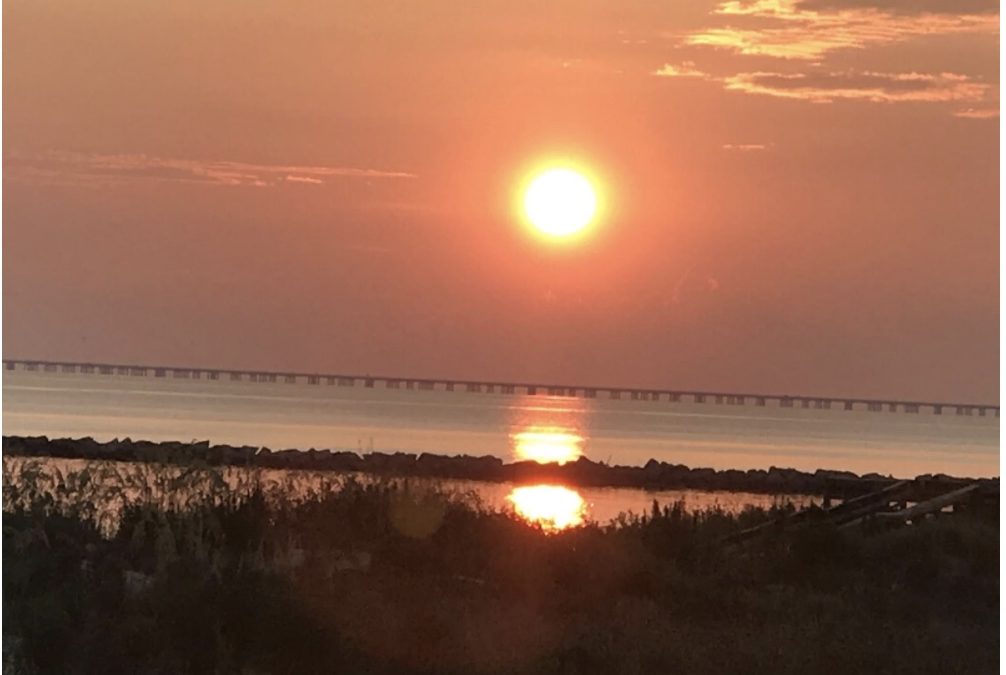WORD OF THE YEAR …….. TRANSITION
Noun: 1. passage from one state, stage, subject, or place to another, 2. a movement, development, or evolution from one form, stage, or style to another
Verb: To undergo a process or period of transition
The month of January is believed to have gotten its name from the Roman god, Janus. In Roman mythology, Janus is the god of transitions, beginnings, passages, gates, and doorways. He is usually depicted as having two faces because he looks to the past and to the future.
 We can all take this time in January to briefly look to the lessons of the past year as we look to the future with hope and optimism.
We can all take this time in January to briefly look to the lessons of the past year as we look to the future with hope and optimism.
Transitions are a part of life. Some are natural, such as the transition from day to night and night to day. Transitions are an essential part of our growth and development – physical, mental, and spiritual. From birth to school, puberty, leaving home, our first jobs, growing old, and ultimately death – these are all transitions that we will experience. We transition from one thought to another, one activity to another, and one year to the next.
I am reminded daily of how natural transitions are with my new puppy, Shanti. Puppies change so quickly in the first year and you change with them. I am just grateful that we have transitioned out of the biting stage.
Transitions can be big or small. Positive or negative or both. Voluntary or involuntary. Major life transitions, however, especially when unexpected or unplanned, can be overwhelming and stressful.
Examples of Major Life transitions
- Beginning of a relationship
- End of a relationship
- Buying a house
- Selling a house
- Relocation
- Changing Jobs
- Loss of a Loved One
- Illness
- Significant loss
In essence, our lives are a string of transitions. Whether positive or negative, transitions can be challenging and often bring up a lot of emotions. Most people going through transitions go through various stages of emotions and how we process them, what we learn from the transitions, and how we apply our newfound skills to our next transition (and life is full of them) will determine whether we enjoy and embrace life changes or dread them. For many, the first emotions are generally negative at first, such as fear, anger, and anxiety. But ultimately, there is acceptance of change and acknowledgment that we must move on. Finally, there is hope and optimism for the future.
Transitions also occur in organizations and in society. Sometimes, these transitions can lead to powerful transformations. It is my hope that we will see meaningful transformation as we transition into this new year.
Think of all the transitions we have had to undergo this past year. Some have been monstrous:
- the loss of a loved one
- the loss a job or a home
- the loss of health
I would guess that just about everyone on the planet experienced one or more major life transitions this year. One of the biggest transitions for so many people (around the world) was the transition from the office and school to work and learn at home and online. We’ve had to transition from the gym and the yoga studio to online classes or walking outside in nature. We’ve had to transition from restaurants to cooking at home. How was that?! Uncomfortable? Difficult? Wonderful? How did it feel in the beginning? Now, 10 months later, how does it feel? What have we learned about ourselves? What have we changed?
Undoubtedly, it has been a very difficult year for most of us, for one reason or another. But, as Albert Einstein once said: “in the middle of difficulty, lies opportunity”. As we stand at the gate, looking back at 2020, and looking ahead to 2021, at this time of transition, what lessons have we learned and what will we bring with us?
In yoga, as we move from one pose to another, we are taught that the period of transition is just as important as the pose. Are we rushing to get out of a difficult pose, ready to nail the next pose, or are we mindfully flowing from one step (one breath) to the next? Mindfulness is what transforms the postures from exercise to yoga. Mindfulness is what transforms transitions into opportunities. Being mindful of the transitions allows us to learn something about ourselves.
As a cardiologist, it is my hope that one of the most valuable lessons we have all learned in 2020 is how precious our health and lives are. Many of us have lost loved ones, cared for or prayed for sick loved ones, but with over 20 million COVID-19 cases in the US alone, we all likely know someone who was infected with the virus. No one is immune, not even the President of the United States or the Prime Minister of the United Kingdom.
While we continue to fight this pandemic, I believe it is important to highlight that heart disease remains the #1 cause of death in the world AND is on the rise. Death from cardiovascular disease declined significantly from 1950 to 2005 and then plateaued until recently. The decline was due to a health transition! Advances in technology were key but equally important was the improvement in health from a decline in cigarette smoking. In 1964, the Surgeon General began to issue public warnings about the dangers of tobacco and thus began the campaign against cigarette smoking. It wasn’t easy at first since the cigarette companies were major sponsors of shows on all major television networks. The public perception gradually shifted as the media stopped portraying smoking as sexy and started to highlight the dangers of smoking.
When it comes to our health in 2021, this pandemic has given us the opportunity to redirect some of our attention to our health. We are in dire need of another health transition. According to the CDC, nearly half of all Americans have some form of cardiovascular disease. More than 500,000 people will die this year due to uncontrolled hypertension. Six in 10 Americans live with at least one chronic disease, like cardiovascular disease, cancer, or diabetes. These and other chronic diseases are the leading causes of death and disability in America and a leading driver of health care costs.
During this pandemic, we have learned that individuals with high blood pressure, diabetes or prediabetes, metabolic syndrome, and obesity are at increased risk of poor outcomes if they develop Covid-19. These are, in fact, the same risk factors for heart disease which also increases the risk of poor outcomes in cardiac patients infected with the virus. We have to ask ourselves – What is the common link?
While the answer may not be wholly understood as of yet, it appears that inflammation and insulin resistance are at the core of these conditions. Chronic inflammation may result from eating inflammatory foods, chronic exposure to environmental toxins, and chronic stress. The hormone Insulin regulates our metabolism. Insulin resistance occurs when the cells of the body do not respond appropriately to Insulin and this throws off our metabolism. At the root of the inflammation and insulin resistance is our lifestyles. Believe it or not, this is actually good news because we have control over how we live our lives.
Our lifestyles, how we live, is a composite of behaviors, habits, attitudes, and thoughts, and is influenced by factors such as family, culture, and socioeconomic status. Our standard American diet (SAD) is inflammatory. Our sedentary, stressful lifestyles lead to insulin resistance, obesity, diabetes, and cardiovascular disease.
In fact, all the chronic conditions of our time are in large part due to a shortlist of lifestyle characteristics, such as:
- Smoking
- Drinking
- Poor nutrition
- Lack of physical activity
- How we manage stress
- The quality of our relationships
The COVID-19 pandemic has brought some awareness to these chronic conditions and their increased risk of poor outcomes in the setting of Covid-19. But we really need to raise awareness about the crucial role of our lifestyles that put our society at risk. I do see some shifts in health perspectives. But until we see fewer commercials and advertisements for fast food, processed food, sugary food, AND government intervention for the assurance of accessible, nutritious food for all, we will not see the major transformation that needs to happen to reverse our current health trends.
But we, as individuals can change our lifestyles and lower our risk and the risk of our children from developing disease. We can make a difference one meal or one walk at a time. Many of us have embraced homemade meals. Please share your experience and your recipes with family and friends. I now see so many people walking outside. Being cooped up for so long had this wonderful, positive effect. People appreciate fresh air, movement, and perhaps the opportunity to share time with loved ones outdoors. Let us take these valuable lessons forward into 2021 and beyond with hope and optimism to transition from disease to true health and wellness.
Om Shanti, Shanti, Shanti


